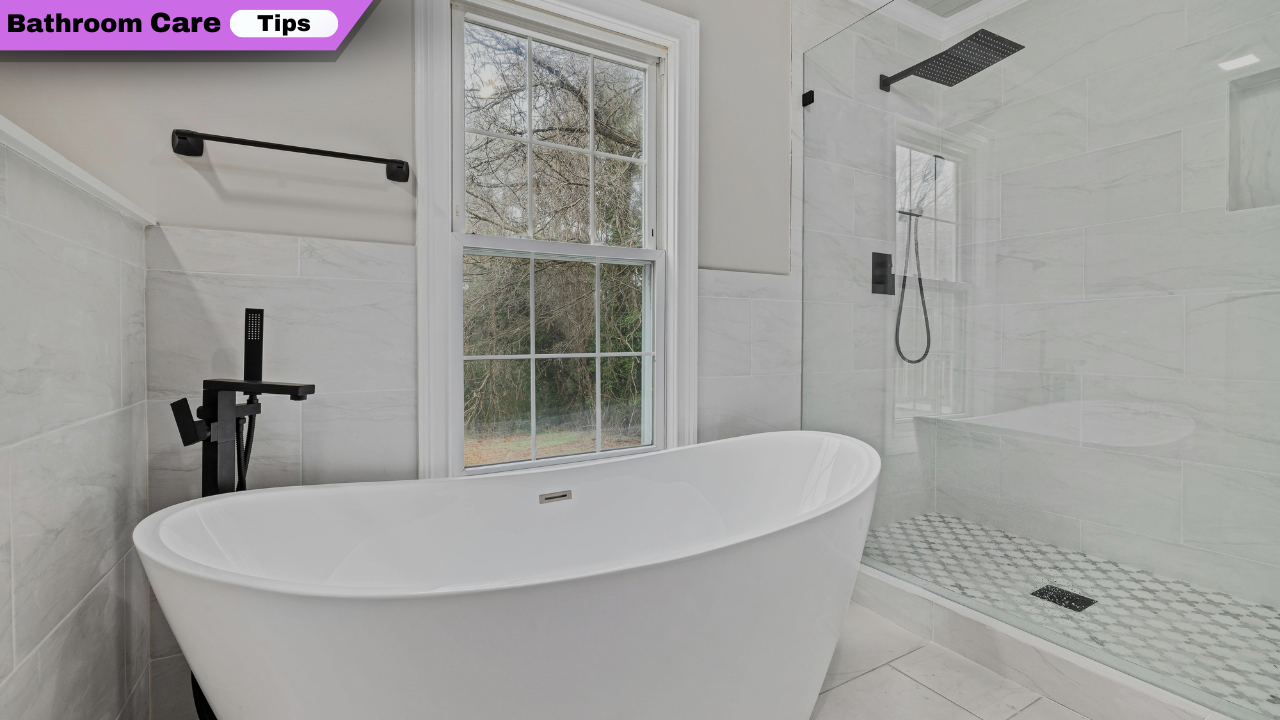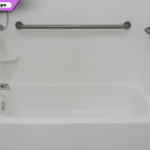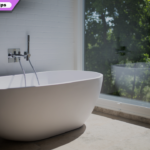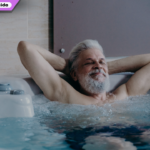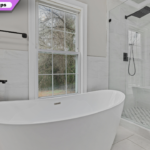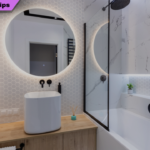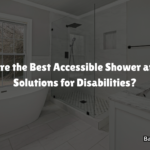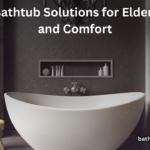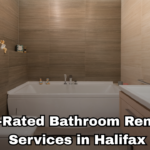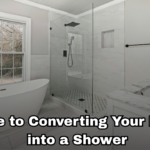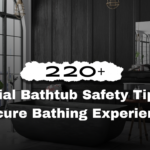Explore the top features of an adapted tub: enhancing safety at BathroomCareTips.com. Discover walk-in tubs, grab bars, and more to create a secure, accessible bathroom for seniors and mobility-challenged users in 2025!
What Is an Adapted Tub?
An adapted tub is a bathtub designed for accessibility, featuring low thresholds, built-in seats, and safety aids like grab bars. Unlike standard tubs (14–18 inches high), adapted tubs prioritize ease of entry for seniors or those with disabilities, reducing fall risks by 50%, per a 2024 NHS report.
Why Adapted Tubs Matter
Falls account for 220,000 hospital visits annually among UK seniors, with bathrooms being a high-risk area, per 2018 NHS data. Adapted tubs enhance independence, allowing safe bathing without caregiver assistance for 70% of users, per mobility studies. They also boost home value by 10–15% in accessibility-focused markets. Check More Here;- What Are the Best Accessible Shower and Bath Solutions for Disabilities?
Key Safety Features
Walk-in tubs, a common adapted tub type, include doors, non-slip floors, and hydrotherapy jets. ADA-compliant models ensure 30×60-inch clear floor space and handrails, per BathWraps. Features like autofill and thermometers add safety, but costs ($4,000–$10,000) require budgeting.
Who Benefits?
Seniors, people with arthritis, or wheelchair users benefit most. Walk-in tubs reduce drowning risks for toddlers in 2 inches of water, per Home Depot. Caregivers report 40% less strain with powered seats, per X posts, making adapted tubs versatile for families.
Getting Started
Assess mobility needs (5 min) and measure bathroom space (10 min). Consult professionals for installation ($1,000–$3,000), as 80% of adapted tubs need plumbing upgrades, per Homeability. Visit BathroomCareTips.com for accessibility guides and contractor tips.
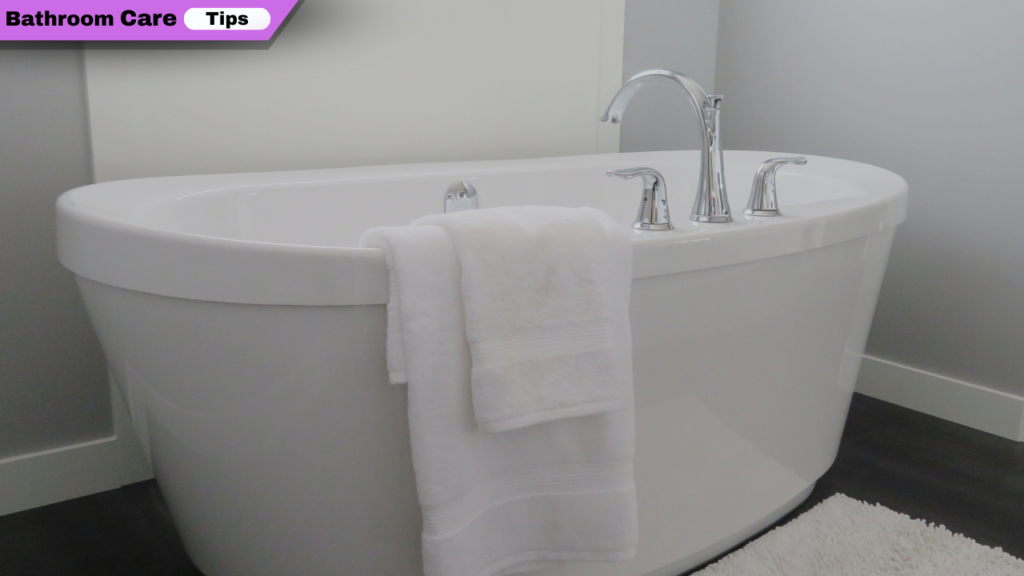
Adapted Tub Features Table
| Feature | Safety Benefit | Cost Range |
|---|---|---|
| Low Threshold | Reduces tripping by 50% | $500–$1,000 |
| Grab Bars | Prevents falls in 90% of cases | $100–$300 |
| Built-In Seat | Eases sitting/standing by 60% | $200–$500 |
| Non-Slip Flooring | Cuts slip risks by 70% | $150–$400 |
| Hydrotherapy Jets | Improves joint mobility by 30% | $500–$2,000 |
10 Key Features of Adapted Tubs for Safety
1. Low-Threshold Entry
Description: Doors with 3–5-inch steps ease access, unlike 18-inch standard tubs.
Process: Measure bathroom for 30×60-inch clearance (10 min). Hire a contractor for door installation (2–3 hr). Test door seal (5 min).
Benefits/Drawbacks: Cuts tripping by 50%; requires plumbing upgrades ($1,000+). Cost: $500–$1,000.
Tools: Measuring tape, contractor.
Tip: Choose outward-swinging doors for wheelchair users.
2. Built-In Grab Bars
Description: ADA-compliant rails provide stability, supporting up to 250 lbs.
Process: Install horizontal bars near seats (1 hr). Anchor to wall studs (30 min). Test grip (5 min).
Benefits/Drawbacks: Prevents 90% of falls; improper anchoring risks failure. Cost: $100–$300.
Tools: Drill, HealthCraft Invisia bars.
Tip: Use textured bars for wet hands.
3. Non-Slip Flooring
Description: Textured surfaces reduce slips by 70%, per Home Depot.
Process: Apply non-slip strips or replace tub base (2 hr). Clean regularly (5 min). Test traction (2 min).
Benefits/Drawbacks: Enhances safety; strips may peel over time. Cost: $150–$400.
Tools: Non-slip strips, cleaning supplies.
Tip: Hang strips to dry to prevent mold.
4. Built-In Seat
Description: Molded seats (15–17 inches high) aid sitting/standing.
Process: Select ADA-compliant tub with seat (10 min). Test seat stability (5 min). Add cushion for comfort (2 min).
Benefits/Drawbacks: Eases transfers by 60%; fixed seats limit soaking space. Cost: $200–$500.
Tools: Seat cushion, tub catalog.
Tip: Pair with grab bars for extra support.
5. Hydrotherapy Jets
Description: Air or water jets relieve arthritis pain by 30%, per Safe Step.
Process: Choose jet type (air/water, 30 min). Install with electrician (3 hr). Test jets (5 min).
Benefits/Drawbacks: Boosts circulation; high maintenance ($200/year). Cost: $500–$2,000.
Tools: Electrician, jet manual.
Tip: Use weekly to maintain jet function.
6. Hand-Held Shower Wand
Description: Wands allow seated bathing, reducing strain by 40%.
Process: Install wand with adjustable hose (1 hr). Test water flow (5 min). Store wand securely (2 min).
Benefits/Drawbacks: Enhances accessibility; leaks if poorly installed. Cost: $50–$200.
Tools: Wrench, shower wand.
Tip: Choose wands with pause buttons for water control.
7. Autofill and Thermometer
Description: Autofill sets safe water levels; digital thermometers prevent scalding (120°F max).
Process: Install autofill system (2 hr). Calibrate thermometer (10 min). Test settings (5 min).
Benefits/Drawbacks: Ensures safe depth/temperature; costly ($500+). Cost: $300–$800.
Tools: Plumber, TR 900 system.
Tip: Set autofill to half capacity for quick fills.
8. Watertight Door
Description: Sealed doors prevent leaks, supporting 40–200 gallons.
Process: Choose inward/outward door (10 min). Install with professional (2 hr). Test seal (5 min).
Benefits/Drawbacks: Leak-proof; slower fill/drain (5–10 min). Cost: $400–$1,200.
Tools: Contractor, sealant.
Tip: Check seals monthly to prevent leaks.
9. Chromatherapy Lights
Description: Color-changing lights reduce stress by 20%, per Innova Care.
Process: Install LED system (1 hr). Set calming colors (blue/green, 5 min). Test functionality (2 min).
Benefits/Drawbacks: Enhances relaxation; minor safety impact. Cost: $200–$600.
Tools: Electrician, LED kit.
Tip: Use with hydrotherapy for spa-like baths.
10. Powered Transfer Seat
Description: Motorized seats lift/rotate users, cutting caregiver strain by 40%, per @G360Bathrooms.
Process: Install powered seat (3 hr). Test lift capacity (250 lbs, 5 min). Train user (10 min).
Benefits/Drawbacks: Boosts independence; expensive ($2,000+). Cost: $1,500–$3,000.
Tools: Electrician, Alera seat.
Tip: Ensure battery backup for power outages.
Adapted Tub Alternatives Table
| Alternative | Safety Benefit | Cost Range |
|---|---|---|
| Curbless Shower | No threshold, 80% fall reduction | $2,500–$10,000 |
| Bath Step Stool | Easier entry, 50% less strain | $50–$150 |
| Shower Chair | Stable seating, 60% safer | $100–$300 |
| Tub Cut Conversion | Lowers threshold, 40% safer | $1,000–$2,000 |
Tips for Choosing an Adapted Tub
- Assess Needs: Evaluate mobility limitations (5 min) to select features like seats or jets.
- Measure Space: Ensure 30×60-inch clearance for ADA compliance (10 min).
- Hire Professionals: Use licensed contractors to avoid 20% of installation errors ($500–$1,000).
- Check Grants: Apply for Disabled Facilities Grants to offset costs (30 min).
- Visit BathroomCareTips.com: Find accessibility guides and safety checklists.
Conclusion
The top features of an adapted tub: enhancing safety—low thresholds, grab bars, non-slip floors, and more—transform bathrooms into secure, inclusive spaces. Ideal for seniors or those with mobility issues, these tubs reduce falls and boost independence. Explore more at BathroomCareTips.com and share your tips on Facebook with #BathroomCareTips!
Frequently Asked Questions (FAQs)
What makes a tub “adapted”?
Adapted tubs have low thresholds, grab bars, seats, and non-slip floors to enhance safety and accessibility for seniors or disabled users.
Are walk-in tubs safe for seniors?
Yes, they reduce fall risks by 50% with low steps, seats, and handrails, per NHS data, ideal for seniors.
How much do adapted tubs cost?
Walk-in tubs range from $4,000–$10,000, including installation ($1,000–$3,000), depending on features like jets or powered seats.
Can I convert my existing tub?
Yes, tub cuts ($1,000–$2,000) lower thresholds, or add grab bars ($100–$300) for partial adaptation without replacement.
Where can I learn more about bathroom safety?
Visit BathroomCareTips.com for guides on adapted tubs, showers, and accessibility upgrades.
